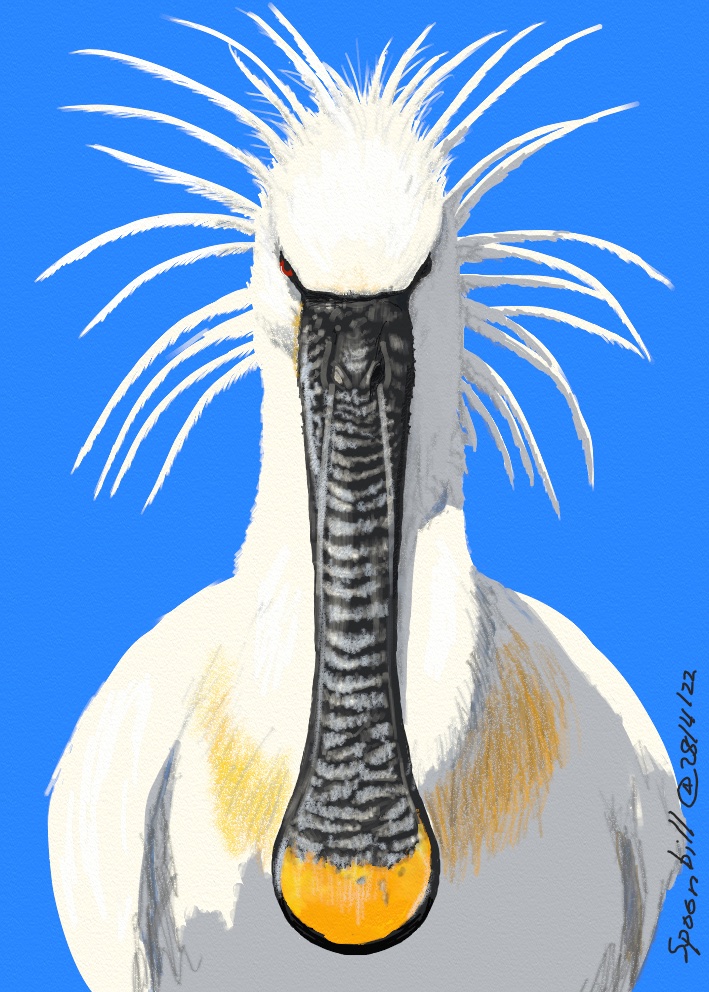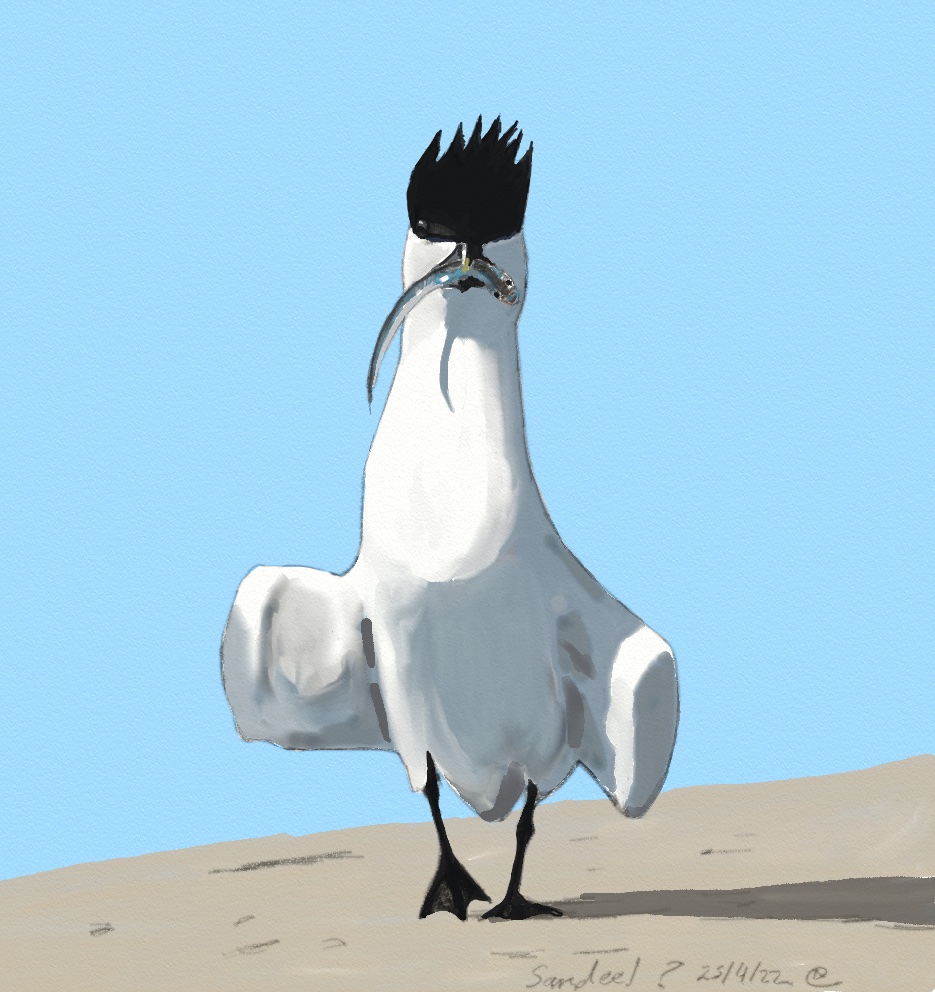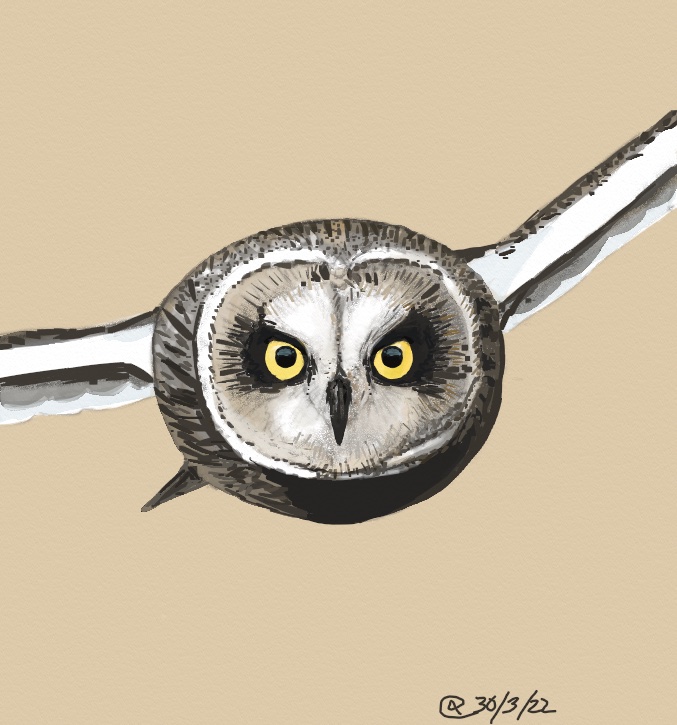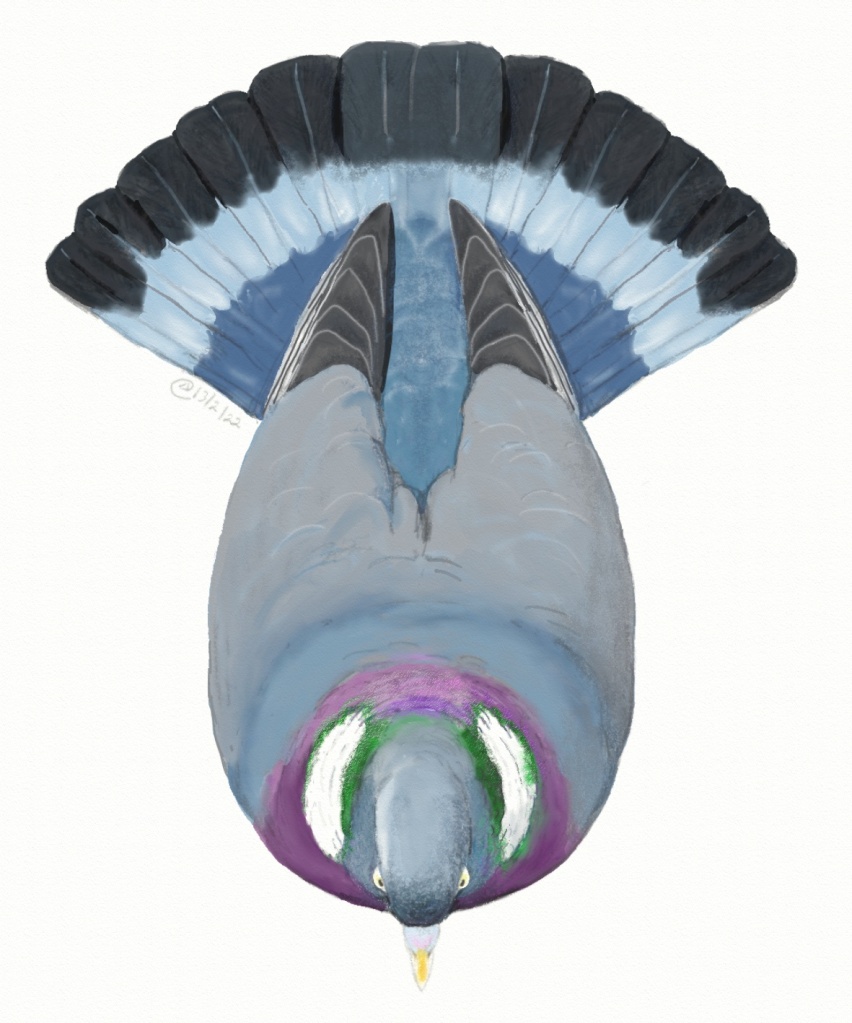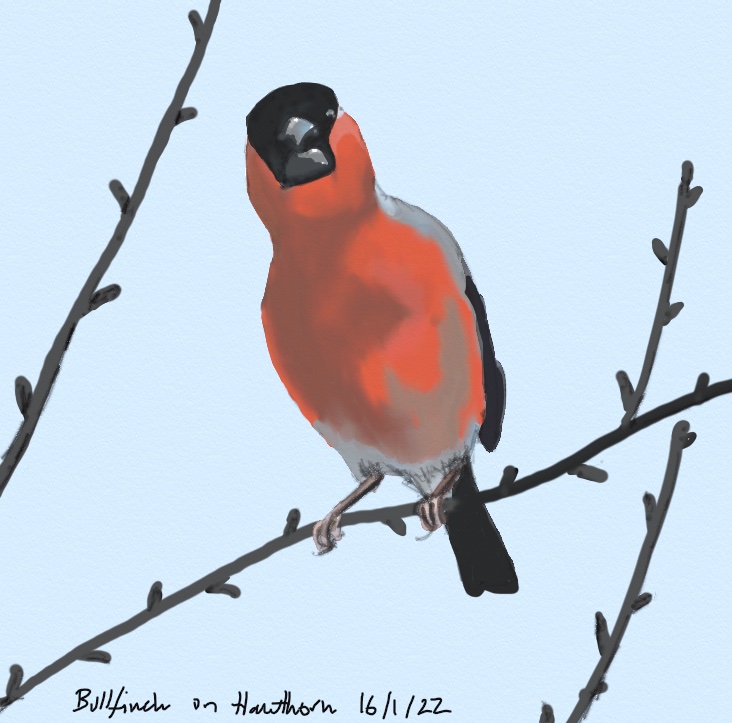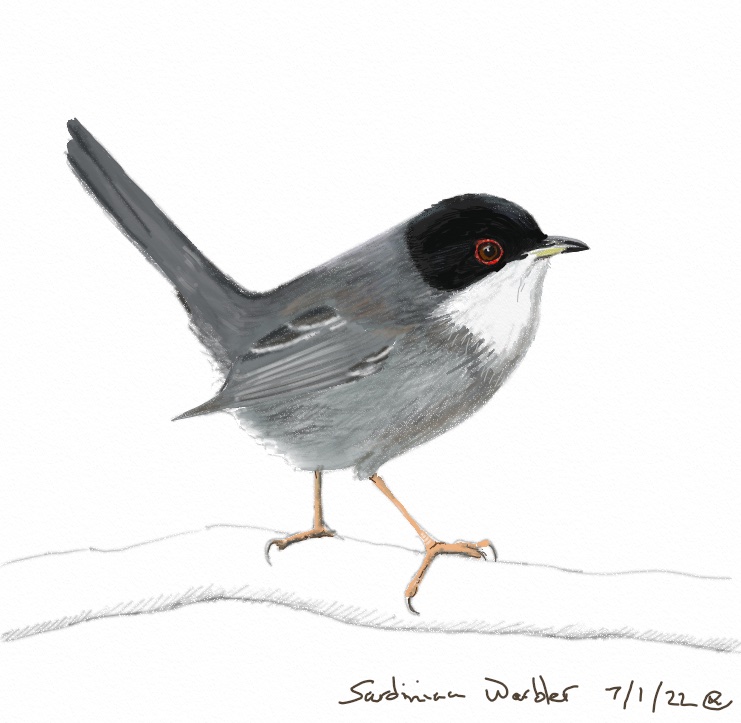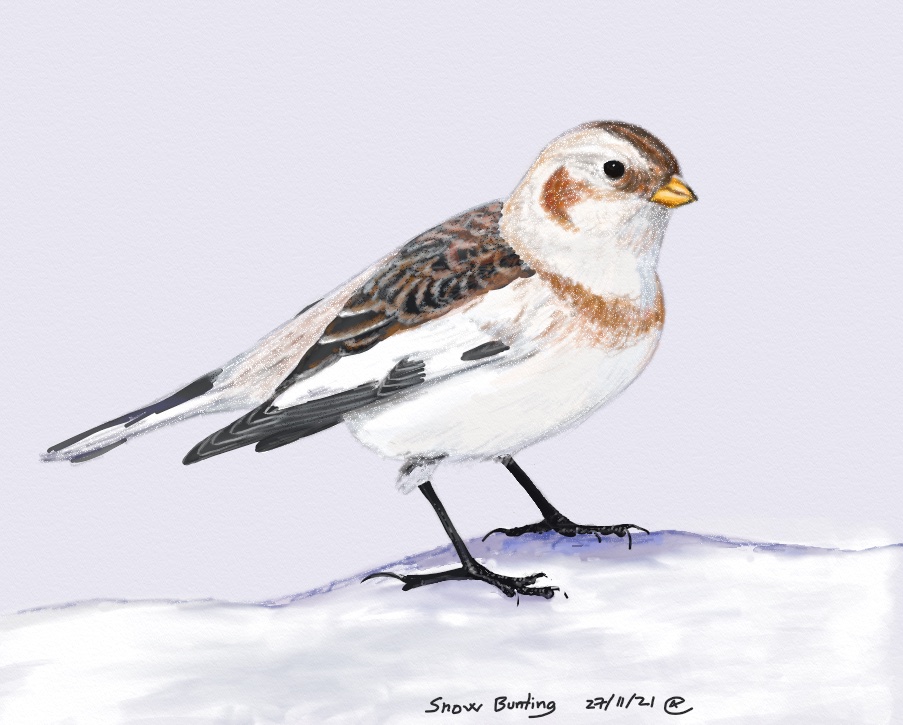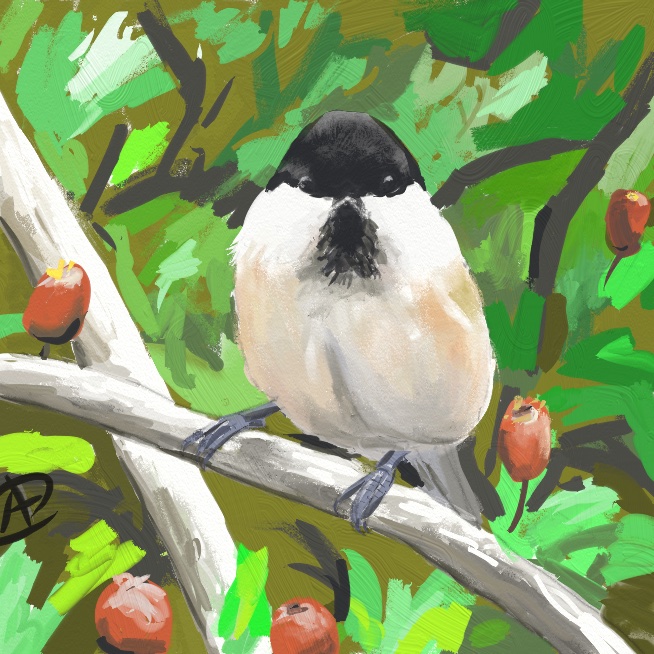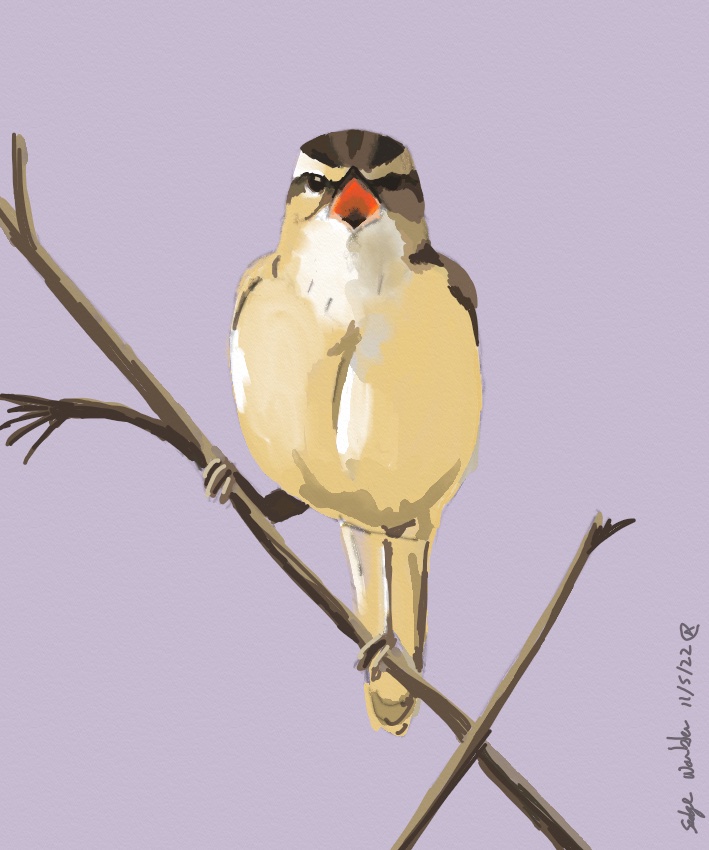
Sedge Warblers remind me of Dawn Chorus day, when I often visit a local nature reserve in the outskirts of the city. The heavy sky of dawn, these feisty migrants just arrived, perched on prominent positions, delivering their screechy, mimetic, loud and angry phrases, bursting into the air for a final flourish of flight song. Their throats are a vivid orange red, like little flames, I think they should be called Firethroats, but there is already another bird call that!

